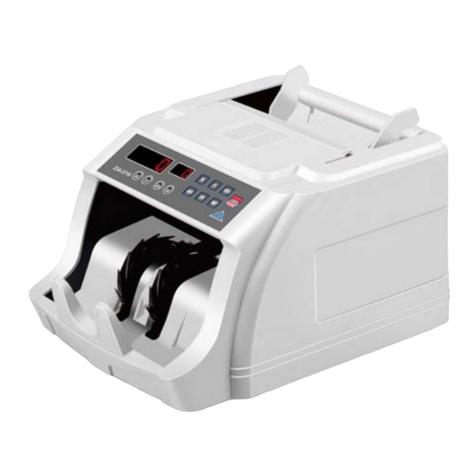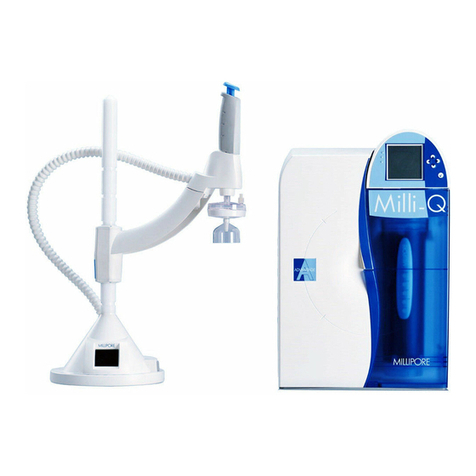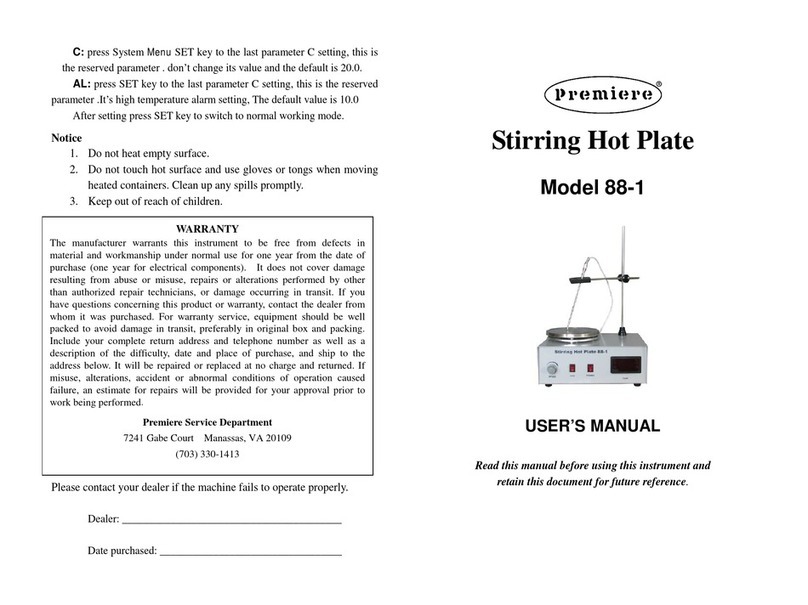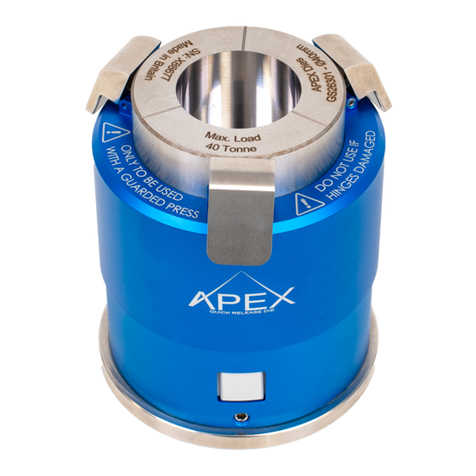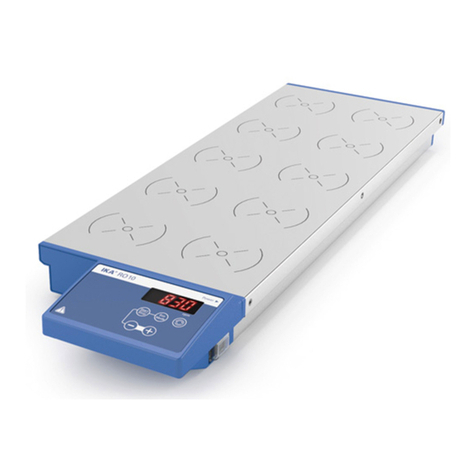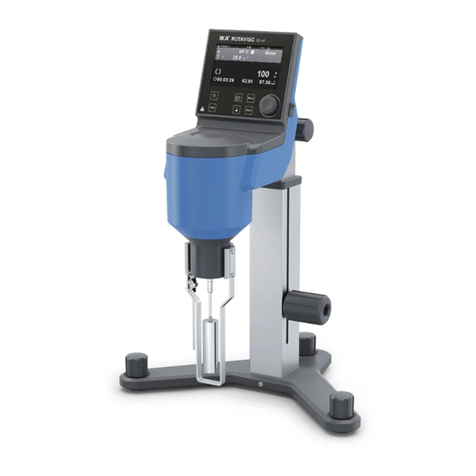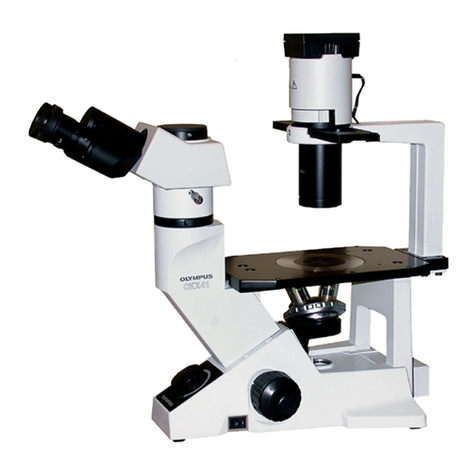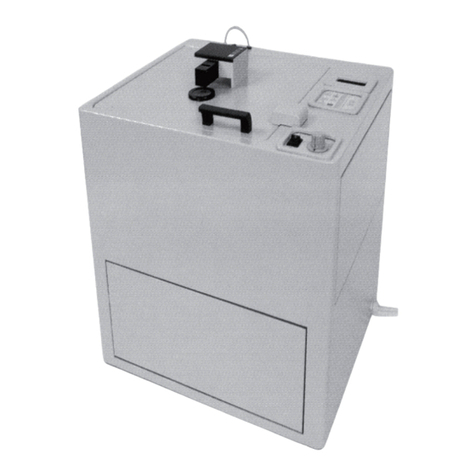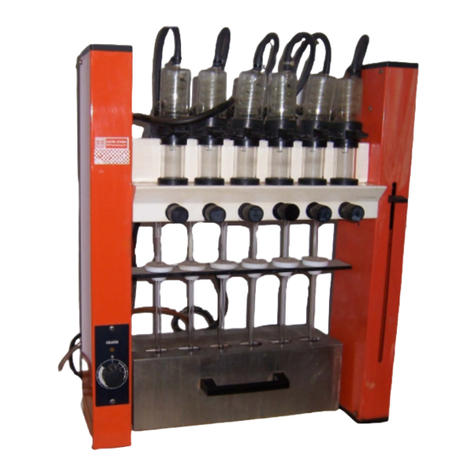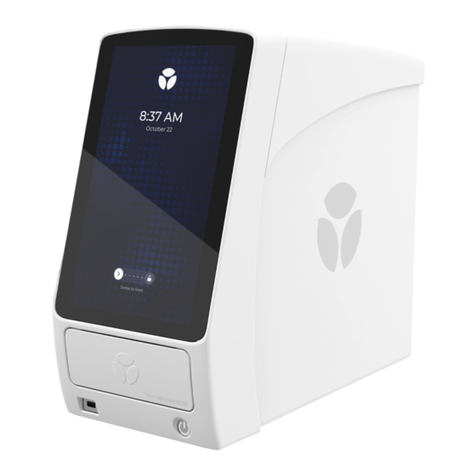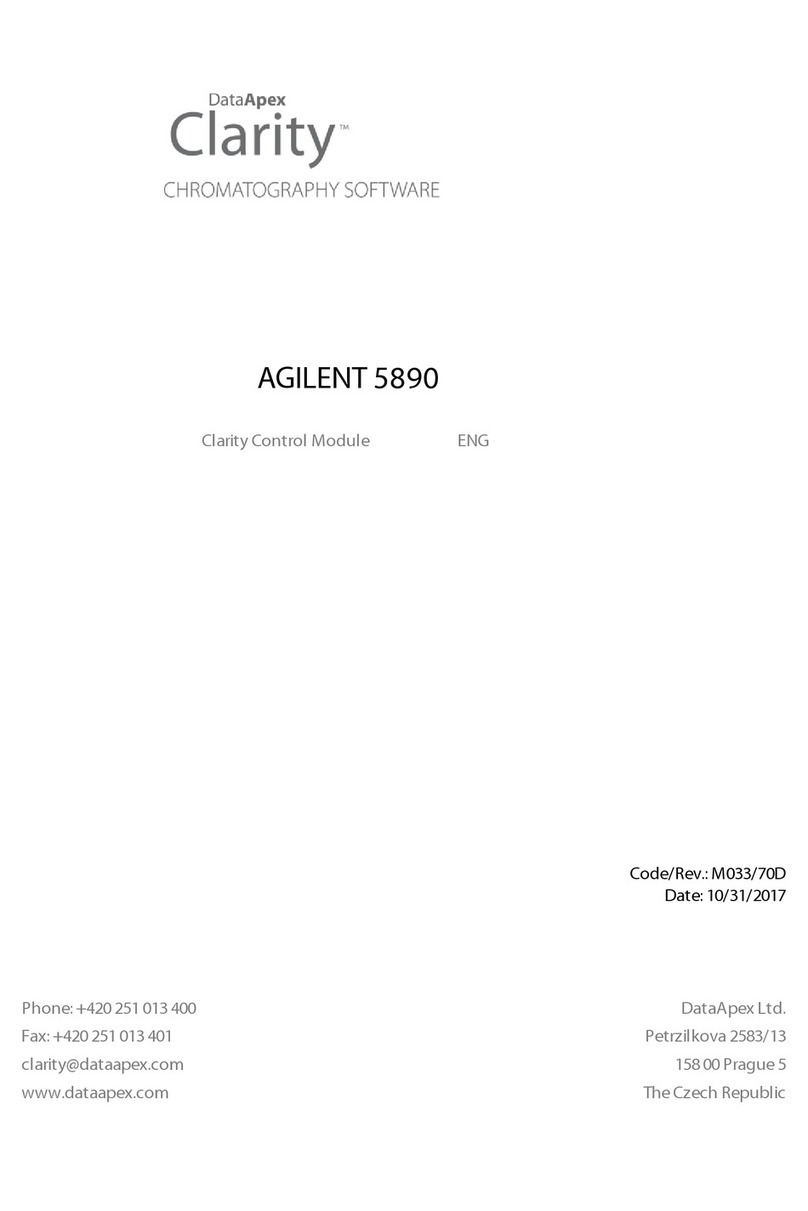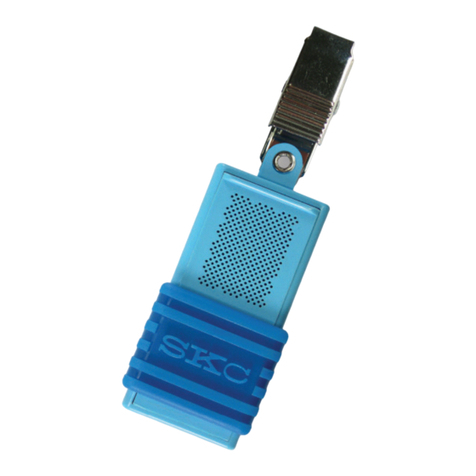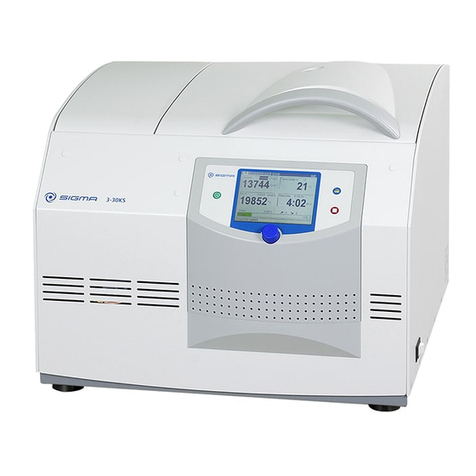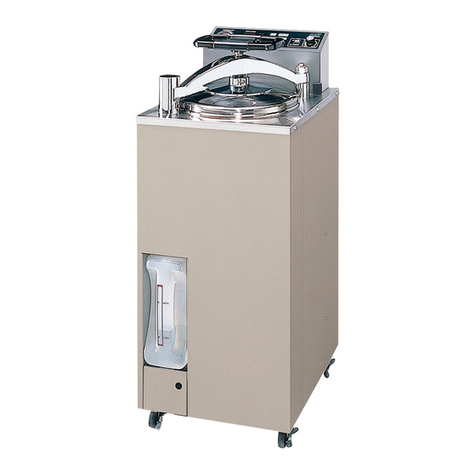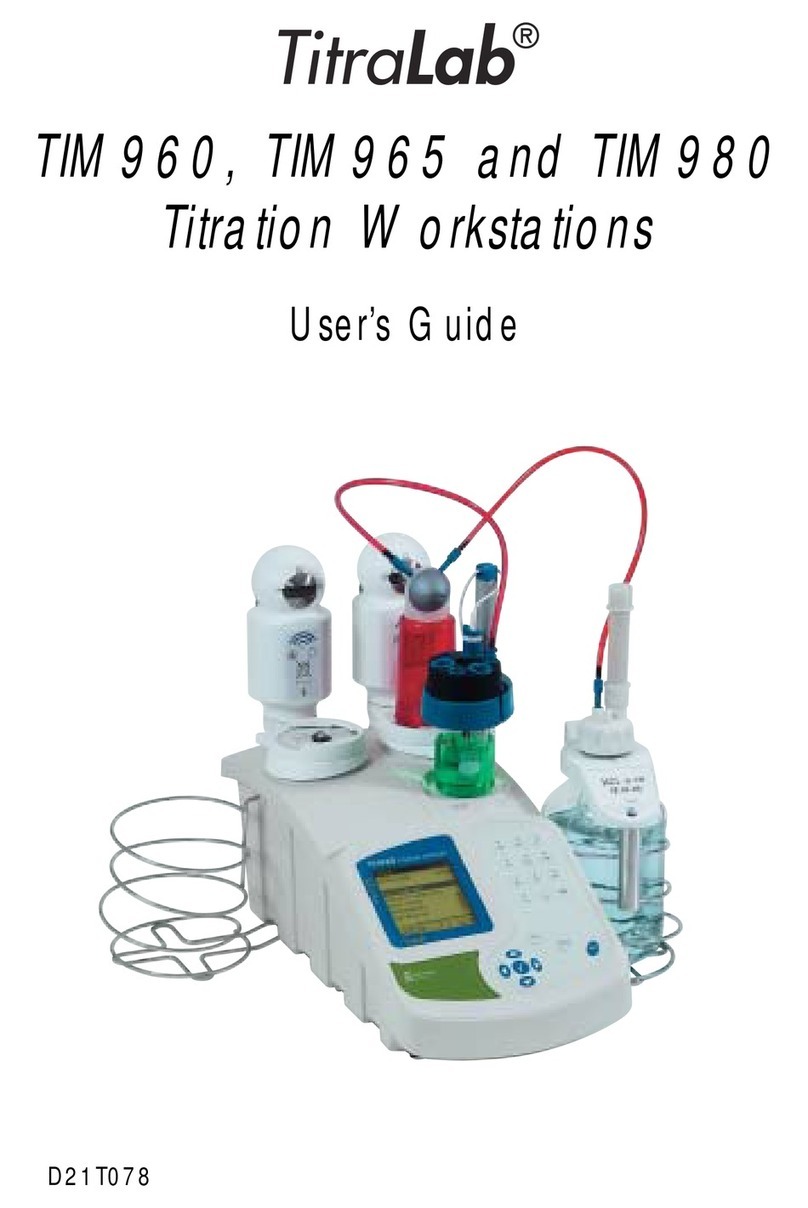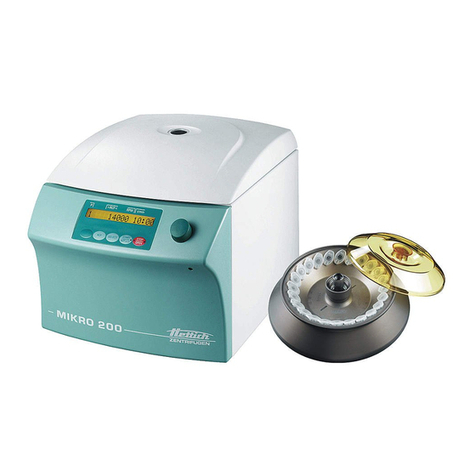Nakanishi PRESTO II User manual

OPERATION MANUAL
PRESTO
î
OM-K0516E 001
Thank you for purchasing the PRESTO ϩ.
Please read this manual carefully, and store it in a place where it can be easily accessed for future reference.
Contents are subject to change without notice.
■Read these warnings and cautions carefully and only use in the manner intended.
■These warnings and cautions are intended to avoid potential hazards that could result in personal injury to the operator or
damage to the device. These are classied as follows in accordance with the seriousness of the risk.
Class Degree of Risk
WARNING A safety hazard could result in bodily injury or damage to the device if
the safety instructions are not properly followed.
CAUTION A hazard that could result in light or moderate bodily injury or damage
to the device if the safety instructions are not followed.
CAUTIONS FOR HANDLING AND OPERATION1.
①Do not touch the cutting tool while it is running.
②Use a protective cover, glasses and / or facemask for your safety during rotation.
③Do not drop or hit the handpiece because the shock can damage internal components.
④Do not force or bend the cutting tool. The shank might be broken and / or bent.
⑤Check if the collet chuck has been tightened rmly before operation.
⑥Observe the permissible speeds the manufacturer or dealer designates for the bur. Otherwise, you may be
injured by scattering and breaking up of the bur.
⑦Do not use burs which are oscillating or bent or damaged and of which shank portions are worn.
Otherwise, you may be injured by scattering and breaking up of the bur.
WARNING
①Do not modify or disassemble unnecessarily, performance and safety may be seriously affected.
②Do not drop the handpiece and unit. Make sure to put the unit on a horizontal and stable surface.
③Do not turn the chuck release ring during rotation of the handpiece. Otherwise, the handpiece will be broken.
④Never supply lubricant to the handpiece. It uses grease lled bearings and additional lubrication may cause
failures.
⑤
Pay careful attention to rattling, vibration, sounds and temperature (heating), and inspect by rotating in advance
before starting use. Immediately ask dealers for repair work if any irregularities are sensed.
⑥The proper air pressure is 0.2 - 0.25MPa (29 - 36.3psi). Pressure exceeding the value may lead to premature
failure of the bearings because of excessive speeds.
⑦Extract water if water drips or contaminants are found on the lter of the unit.
⑧Always clean the shank of the bur you are going to mount. Contaminant deposits in the chuck may lead to
oscillating of the bur and break the chuck.
⑨Install the cutting bur or test bur when not in use.
⑩Operational control, maintenance and inspection is the responsibility of each user.
CAUTION
①Fit the cartridge wrench supplied with the handpiece to the ats on the handpiece
nose. Turn the cartridge wrench as shown in (Fig.10) after it is loosened, unscrew
the nose with ngers and remove from the handpiece.
②Before inserting a new cartridge, clean the head interior.
③Finally, securely tighten the cartridge by turning it in the reverse direction to
removal.
Fig. 10
10 - 1 Removal of Chuck
①
Remove the cartridge with a bur or dummy bur installed.
(9. REPLACEMENT OF CARTRIDGE)
②
Hold the rotor with two ngers as shown on the Fig.11.
Mount the wrench provided on the rotor nut located on the top of rotor shaft and turn
counterclockwise (Either side of wrench can be used).
③
When the rotor nut is loose. Push out the chuck carefully with a dummy bur or the bur
shank from the back of the cartridge, the Guide-bush and the chuck will come out (Fig.12).
・
When cleaning the chuck, clean it with ultrasonic cleaner etc.
Spray oil to the inside of the rotor shaft and clean thoroughly.
Fig. 11
Test Bur
Test Bur Chuck Guide-bush
Fig. 12
10 - 2 Installation of a New Chuck
①Apply oil thinly on the surface of the new chuck or the chuck after cleaning, insert the test bur and push into the rotor shaft.
(Fig.13)
②Set the longer one of the guides of the guide bushings on the end of the rotor shaft along the test bur (Fig.14).
③Finally insert the rotor shaft nut along the test bur, and tighten rmly with a wrench while holding the rotor (Fig.15).
Rotor Shaft Nut
Fig. 15
Guide-bush
Fig. 14
Test bur
Chuck
Fig. 13
11 - 1 Draining the Filter
Check the lter bowl from the lter inspection window, and if there is an accumulation
of water, insert ngers from the bottom, and turn the drain valve in the direction of the
arrow (counterclockwise) to drain water from the lter (Fig. 16).
After draining, securely tighten the drain valve by turning it in the reverse direction.
Fig. 16
REPLACEMENT OR CLEANING PROCEDURES OF CHUCK10.
MAINTENANCE OF UNIT11.
REPLACEMENT OF CARTRIDGE
9.
As the guide-bush is a very small part, be careful not to lose it.
CAUTION
Remove the chuck and clean once a week.
NOTICE
DISPOSAL OF THE PRESTO î
12.
When disposal of a PRESTO ϩis necessary, follow the instructions from your local government agency for proper disposal of
industrial components.
2015.01.20 002

①PRESTOϩControl Unit ⑧Plumbing Hose ⑮Handpiese Tubing Clamps ㉒Wrench Flats
②Pressure Gauge ⑨PRESTO Handpiece ⑯Bur Push-in Tool ㉓Chuck Release Ring
③Regulator Knob ⑩Handpiece Tubing ⑰Cartridge Wrench ㉔Tube Clamp Ring
④Filter Inspection Window ⑪Foot Pedal Connector ⑱Rotor Shaft Nut Wrench ㉕Operation Manual
⑤Handpiece Connector ⑫Hose Stopper ⑲Handpiece Stand
⑥Tube Stopper ⑬Plumbing Connector ⑳Air Supply Connector
⑦Foot Pedal ⑭Unit Mounting Screws ㉑Cartridge
speed 320,000min-1 (rpm)
Recommended Air Pressure 0.2 - 0.25MPa (29 - 36.3psi)
Handpiece Dimensions ȭ16.6 (D) x 130 (H) mm
Handpiece Weight 71g
Noise Level at 1m distance Less than 70dB (A)
6 - 1 Mounting of the Control Unit
The Control Unit can be secured on a wall, on a work-bench, or under a work-bench.
When securing on a wall surface, etc., x the Control Unit with unit xing screws in the two screw holes on its back.
Control Unit Dimensions W120 x D102 x H165 (mm)
Control Unit Weight 720g
Proper Air Pressure 40Nℓ/ min
Inside Diameter ȭ1.6mm Bur Only
6 - 2 Installation of Plumbing Hose
WARRANTY3.
COMPONENT NAMES AND BASIC PACKAGE
2.
We provide a limited warranty for our products. We will repair or replace the products if the cause of failure is due to the following
manufactures defects. Please contact us or your local distributor for details.
①Defect in manufacturing.
②Any shortage of components in the package.
③Where damaged components are found when initially opening the package.
(This shall not apply if the damage was caused by the negligence of a customer.)
CONTACT US4.
For your safety and convenience when purchasing our products, we welcome your questions.
If you have any questions about operation, maintenance and repair of the product, please contact us.
Company Name
Business Hours
U.S. Toll Free No.
Telephone No.
Fax No.
Web Address
:
Industrial Div.
: 8:30am to 17:00pm (CST)
(closed Saturday, Sunday and Public Holidays)
: 800-585-4675
: 847-843-7664
: 847-843-7622
: www.nskamericacorp.com
Contact UsContact Us
For U.S. Market
Company Name
Business Hours
Telephone No.
e-mail Address
:
: 8:00am to 17:00pm
(closed Saturday, Sunday and Public Holidays)
: +81 (0) 289-64-3520
For Other Markets
SPECIFICATIONS5.
Temperature Humidity Atmospheric Pressure
Operation Environment 0 - 40°CMAX.75%
(No condensation) 700 - 1,060hPa
Transportation and Storage Environment -10 - + 50°C 10 - 85% 500 - 1,060hPa
Push the plumbing hose into the plumbing connector located at the regulator on the left-
hand side of the Control Unit until it is securely set to make connection as shown in Fig. 1.
Check if the hose is securely installed by tugging it after connection.
Connect the other end of the plumbing hose to the air line. At this time, use the attached
connector if necessary.
Plumbing connectorPlumbing connectorPlumbing connector
Plumbing HosePlumbing Hose
White RingWhite Ring
Fig. 1
SYSTEM ASSEMBLY PROCEDURES6.
・
Push the plumbing hose into the plumbing connector until it is securely set.
Otherwise, air may leak.
・
Pushing the white ring, on the plumbing connector, gently remove the tube.
CAUTION
6 - 3 Installation of foot Pedal
Loosen and remove the hose stoppers (two) from the foot pedal connectors on the back
of the Control Unit, and insert them into the foot pedal hoses. At this time, insert the hose
stoppers so that their screws come outside (Control Unit side) (Fig. 2)
. For wall-hanging
use, pass the hoses through the hole shown in Fig. 2.
Insert the "1" - marked end of each hose according to the instructions on the label. After
insertion of both hoses, securely tighten the hose stoppers.
Foot Pedal ConnectorFoot Pedal Connector
When using by Wall-hanging
way, this hole can also be used.
Hose StopperHose Stopper
When using by Wall-hanging
way, this hole can also be used.
Fig. 2
6 - 4 Installation of Handpiece
Loosen and remove the tube stopper from the handpiece
connector on the right-hand side of the Control Unit, and insert
it into the handpiece tubing. At this time, insert the tube stopper
so that its screw comes outside (Control Unit side) (Fig. 3).
Insert the handpiece tubing into the handpiece connector, and
securely tighten the tube stopper.
Insert the tube clamp ring into the other end of the handpiece
tubing as shown in Fig. 4, and insert it into the handpiece
tubing socket as shown in Fig. 5.
Handpiece ConnectorHandpiece Connector
Handpiece Tubing
Handpiece Tubing
Tube Stopper
Tube Stopper
Fig. 3 Fig. 5
Handpiece ConnectorHandpiece Connector Tube Clamp Ring
Tube Clamp Ring
Fig. 4
6 - 5 Installation of Handpiesce Tubing Clamps
Locate a Handpiece Tubing Clamp (two pieces supplied) at a proper location to conveniently position the handpiece tubing.
7 - 1 Set the Drive Air Pressure
Supply air, and adjust to 0.25MPa (36.3psi) by pulling the Regulator Knob upward and turning.
When adjustment is made, push the knob down to lock (Fig.6).
7 - 2 Operation
Stepping on the Foot Pedal starts rotation.
7 - 3 For Finishing Work
Close the main air valve.
Regulator KnobRegulator Knob
Fig. 6
OPERATION OF CONTROL UNIT
7.
①As the chuck of the PRESTO handpiece is a push-in type, set the
ȭ1.6mm burs and push in as shown in Fig.7.
If the end of the bur is tapered push in using the provided bur-
inserting wrench as shown in Fig.8.
②When removing the bur, turn the chuck release ring in the direction
of the arrow in Fig.9. Fig. 7 Chuck Release RingChuck Release Ring
Fig. 9
Fig. 8
OPERATION OF HANDPIECE
8.
① ② ③④⑤⑥
⑦⑧ ⑨ ⑩
⑪
⑫
⑬
23 25
21
24 22
⑭
⑮
⑯
⑰
⑱
⑲
⑳
Other Nakanishi Laboratory Equipment manuals

